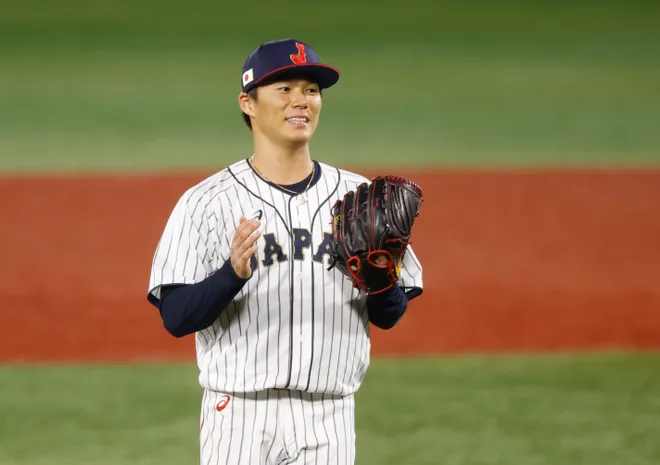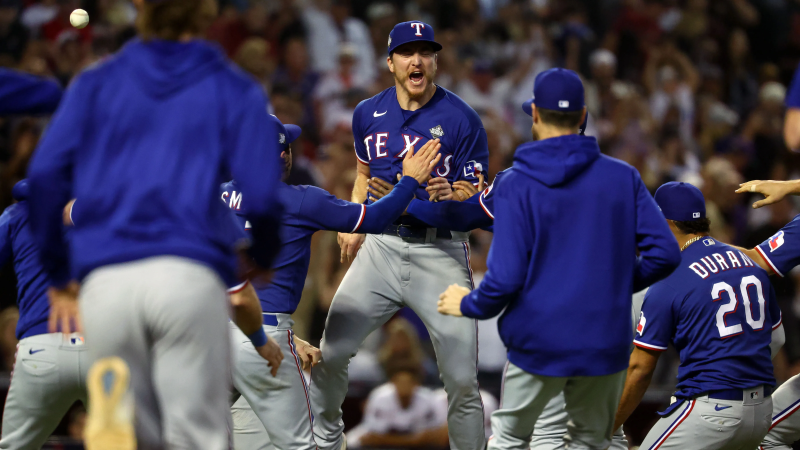Yoshinobu Yamamoto is a Dodger: How phenom's deal affects Yankees, Mets and rest of MLB
Yoshinobu Yamamoto is a Los Angeles Dodger and we all should have seen it coming.
Yamamoto’s 12-year, $325 million agreement with the Dodgers startled, perhaps stunned, the baseball world Thursday night given that almost every major league heavyweight – Yankees, Mets, Red Sox, Giants, Blue Jays – sought his services. And that the team he signed with just guaranteed $700 million to his Japanese countryman, the great Shohei Ohtani.
So, why not both?
It was a simple question but one not deeply pondered as Yamamoto’s North American tour ventured from coast to coast, with unfounded but leading vibes that suggested anywhere else might have made sense.
And what now?
HOT STOVE UPDATES: MLB free agency: Ranking and tracking the top players available.
Well, there’s plenty of tremors from this massive transaction, affecting dozens of teams. Let’s break down the whys and the ramifications:
So, why did Yoshinobu Yamamoto sign with the Dodgers?
Good question, and one we may not fully know until the Dodgers trot him out with all the fanfare of their blue heaven Ohtani up-front a week ago. But there’s a few solid explanations.
No. 1 is that while the hundreds of millions of dollars are nice, these dudes are competitive. And it’s impossible to miss the Dodgers’ 11 consecutive playoff berths and 10 division titles in that span, that they could do virtually nothing last offseason yet still win 100 games.
It was a fun parlor game to ponder whether Yamamoto might view Ohtani’s signing as a lure or a deterrent, that Yamamoto might want to command a few more headlines back home if he charted his own course, like signing with the rival Giants. Well, we seem to have our answer and once again it was right in front of us: Who the hell wouldn’t want to play with Ohtani?
And sure, playing on the West Coast saves hours of flight time back to Japan. Though Yamamoto certainly isn’t flying coach again in his life.
How can the Dodgers afford all these players?
Can two things exist at once? Simply, a bottomless river of cash along with a dash of financial restraint.
Beyond the centralized revenue from national TV contracts and such, baseball franchises are subject to the financial peaks and valleys of ownership and, increasingly, the state of their local TV contract.
That, first: The Dodgers are still riding the wave of an $8.35 billion deal with Time Warner that runs through 2039. Let other markets worry about cord-cutting’s existential threat.
And Guggenheim Baseball Management Group, the ownership group helmed by Guggenheim Partners CEO Mark Walter, gives the Dodgers financial heft in an MLB landscape that’s increasingly the battlefield of finance and private equity bros. Guggenheim manages more than $300 billion in assets.
But they don’t necessarily pass out blank checks like Dodger Dogs at Chavez Ravine. The club did virtually nothing last offseason, cutting ties with longtime stars Justin Turner and Cody Bellinger, all with an eye toward Ohtani. The franchise did, in fact, duck under the competitive balance tax from 2018-2020, resetting its penalty rates.
All the while, a best-in-class drafting and development apparatus has endured under baseball ops president Andrew Friedman. And the group caught a huge break when Ohtani offered to defer $680 million of his $700 million contract, making his CBT salary $46 million instead of $70 million.
“I figured if I defer as much money as I can,’’ Ohtani said last week, via longtime translator Ippei Mizuhara, “that's going to help the CBT and it's going to help the Dodgers be able to sign better players and make a better team.’’
Players like oh, say, Yamamoto.

Are the Dodgers a lock to win the World Series?
Oh, you silly goose.
There truly are no superteams in baseball, not even ones with former MVPs like Mookie Betts and Freddie Freeman and Ohtani, and a ready-made ace like Yamamoto. Regardless of how it all comes together, the best team over 162 games rarely wins the World Series – just 14 times in the 54 seasons since divisional play began.
And it only got tougher with the playoff field expanded to 14 teams. In the first two years of this format, the teams with the best records – the 2022 Dodgers and ’23 Braves – were knocked out in the Division Series.
With Ohtani’s pitching exploits shelved until at least 2025 due to elbow surgery, the Dodgers still have rotation questions, even with the trade for Tyler Glasnow and Yamamoto’s signing. Walker Buehler’s strong return from Tommy John surgery and youngster Bobby Miller’s continued progression would make them very scary, however.
That said, Yamamoto’s signing may truly have something for everyone: A 110-win team for Dodgers fans, and schadenfreude for everyone else should they fall short in the playoffs.
What will the Yankees and Mets do now?
Cope with the utter irrelevance of New York baseball now that the Dodgers have landed two international superstars.
Kidding, kidding (mostly). Yet this is a big blow for both teams, especially after both showed their love for Yamamoto with trips to Japan and offers of uniform numbers and meetings with Japanese legends.
For now, it’s certainly a bigger blow for the Yankees. With 2024 shaping up as an all-in effort after the trade for slugger Juan Soto, Yamamoto and Gerrit Cole would have given the Yankees a peerless 1-2 punch and, perhaps more important, served as a key hedge against injuries or ineffectiveness from left-handers Carlos Rodon and Nestor Cortes.
Now, a reunion with lefty Jordan Montgomery would make a lot of sense – though he’s gotten much more expensive since the club dealt him to St. Louis for Harrison Bader in 2022 and he went on to win a World Series title last month with the Rangers.
As for the Mets? It seems likelier they’d simply lick their wounds and retrench. The trades of $43.3 million aces Max Scherzer and Justin Verlander already signaled 2024 as a transition season of sorts. Signing Yamamoto would have given them a devastating look next year – Yamamoto, Kodai Senga, Jose Quintana is a real nice 1-2-3 – while locking up a near surefire ace for a decade.
Montgomery and Blake Snell do not fit that profile, and both should see bidding for their services near or well exceed the $200 million mark. The Mets jumping into that pool would smack of doing something merely for the sake of doing something.
How does this shape the rest of the offseason?
In hindsight, Yamamoto was perhaps a bigger domino to fall, in that Ohtani’s market never realistically extended past two or three teams. Now, trade activity should ramp up even further with an already flaccid free agent market missing five of its top 10 stars.
And there’s simply far too many teams in need of talent – or a big free agent victory – than there are difference-making players.
The Giants went in big but predictably missed out on Ohtani and Yamamoto; Snell remains an imperfect option but perhaps one they can’t afford to miss. Third baseman Matt Chapman would also fit.
The Blue Jays, too, have not shied from the big boy poker table but have nothing to show for it. Bestowing the largest contract in franchise history on Cody Bellinger plugs a lot of holes.
The Red Sox have once again done nothing to improve their club, badly need pitching and risk further alienating their fan base. They may have little choice but to overpay Montgomery.
In short: It’s going to get late awfully early for lots of teams – save for the one that already secured a billion-dollar bonanza.

Disclaimer: The copyright of this article belongs to the original author. Reposting this article is solely for the purpose of information dissemination and does not constitute any investment advice. If there is any infringement, please contact us immediately. We will make corrections or deletions as necessary. Thank you.







